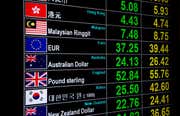Born: 1898 (Linwood, Maryland)
Died: 1983
Key Positions: Mackubin Goodrich & Co.
T. Rowe Price Associates, Inc.
Personal History:
Thomas Rowe Price is known as the “father of growth investing.” His early years placed him in the middle of the Great Depression, but rather than shy away from stock investments he decided to embrace them. He felt that financial markets operated on cycles, and that inspired his investment strategy, which focused on buying into good companies for long term investments. At the time that Price was operating, this was an unusual mode of investment to say the least.
Price studied chemistry at Swarthmore College, graduating in 1919. He quickly discovered that he enjoyed numbers and finances more than chemistry, though, and began his investment career with the Baltimore-based brokerage firm Mackubin Goodirch, now known as Legg Mason. Eventually, Price was named chief investment officer of the firm.
Due to disagreements over Price’s view of growth stocks, Price left to found T. Rowe Price Associates in 1937. Always a forward thinker, Price went against convention when he decided to charge fees based on the investments that clients had in his firm, not based on commission. Price was committed to the principle of “putting the client’s interests first,” believing that happy clients would result in a successful business.
Price entered the mutual fund world with the T. Rowe Price Growth Stock Fund in 1950, where he served as CEO until his retirement in the 1960s. He sold the company in the 1970s, although the company has retained its name and remains one of the nation’s leading global asset management firms.
Investment Philosophy:
Price believed that investors needed to focus more on individual stock-picking over the long term. This could be facilitated by discipline, consistently in the stock picking process, and thorough, fundamental research.
Price was a pioneer in the strategy of growth investing, a process by which investors search out companies with excellent growth potential whose earnings and dividends are expected to grow at faster rates than inflation and those of the general economy. John Train, author of "The Money Masters", says that Price looked for these characteristics in growth companies:
- Superior research to develop products and markets.
- A lack of cutthroat competition.
- A comparative immunity from government regulation.
- Low total labor costs, but well-paid employees.
- At least a 10% return on invested capital, sustained high profit margins, and a superior growth of earnings per share.
Price spent the large majority of his career advocating for the growth model, although by the end of his career he began to question the industry’s widespread enthusiasm for this methodology. It was at this time that he began to sell off his interests in his firm. It turns out that Price was accurate in his assessment, as the early 1970s saw growth stocks tumble considerably. Unfortunately, his namesake company only barely managed to survive, although he had retired and was no longer in control of the investment decisions.
Quotes:
"It is better to be early than too late in recognizing the passing of one era, the waning of old investment favorites and the advent of a new era affording new opportunities for the investor."
"If we do well for the client, we'll be taken care of."
"Change is the investor's only certainty."
"No one can see ahead three years, let alone five or ten. Competition, new inventions - all kinds of things - can change the situation in twelve months."
The Greatest Investors: James D. Slater
-
 Financial Advisor
Financial Advisor4 Best T. Rowe Price Mutual Funds
Learn about four of the best T. Rowe Price mutual funds that have shown strong performance with reasonable net expense ratios, outperforming most peers. -
 Financial Advisor
Financial AdvisorT. Rowe Price Funds for Diversified Income Seekers
Find out which T. Rowe Price mutual funds to use to create a diversified income portfolio for current income, income growth, and capital preservation. -
 Financial Advisor
Financial AdvisorThe Investment Strategy Behind T. Rowe Price Capital Fund
Learn about the T. Rowe Price Capital Appreciation Fund and its investment strategy, portfolio composition, management, investment performance and terms. -
 Investing
Investing3 T. Rowe Price Funds for Value Investing
Read analyses of the top three T. Rowe Price value funds open to new investors, and learn about their investment objectives and historical performances. -
 Investing
InvestingFund Highlight: T. Rowe Price New Horizons Fund (PRNHX)
Learn about the T. Rowe Price New Horizons Fund, which specializes in investing in small market capitalization companies with strong growth prospects. -
 Tech
TechGoldman, T. Rowe Price Target Average Investors With Robo-Advisors
Two more big financial institutions are planning on joining the robo-advisor ranks. -
 Insights
InsightsTop 4 Shareholders of LinkedIn
Four institutional investors own nearly a quarter of the company; their stakes valued at close to $5.6 billion. -
 Investing
InvestingPRHSX: T. Rowe Health Sciences Fund Top Holdings Analysis
Learn about the T. Rowe Price Health Sciences mutual fund, its portfolio make-up, and complete analysis of the fund's top five holdings.



